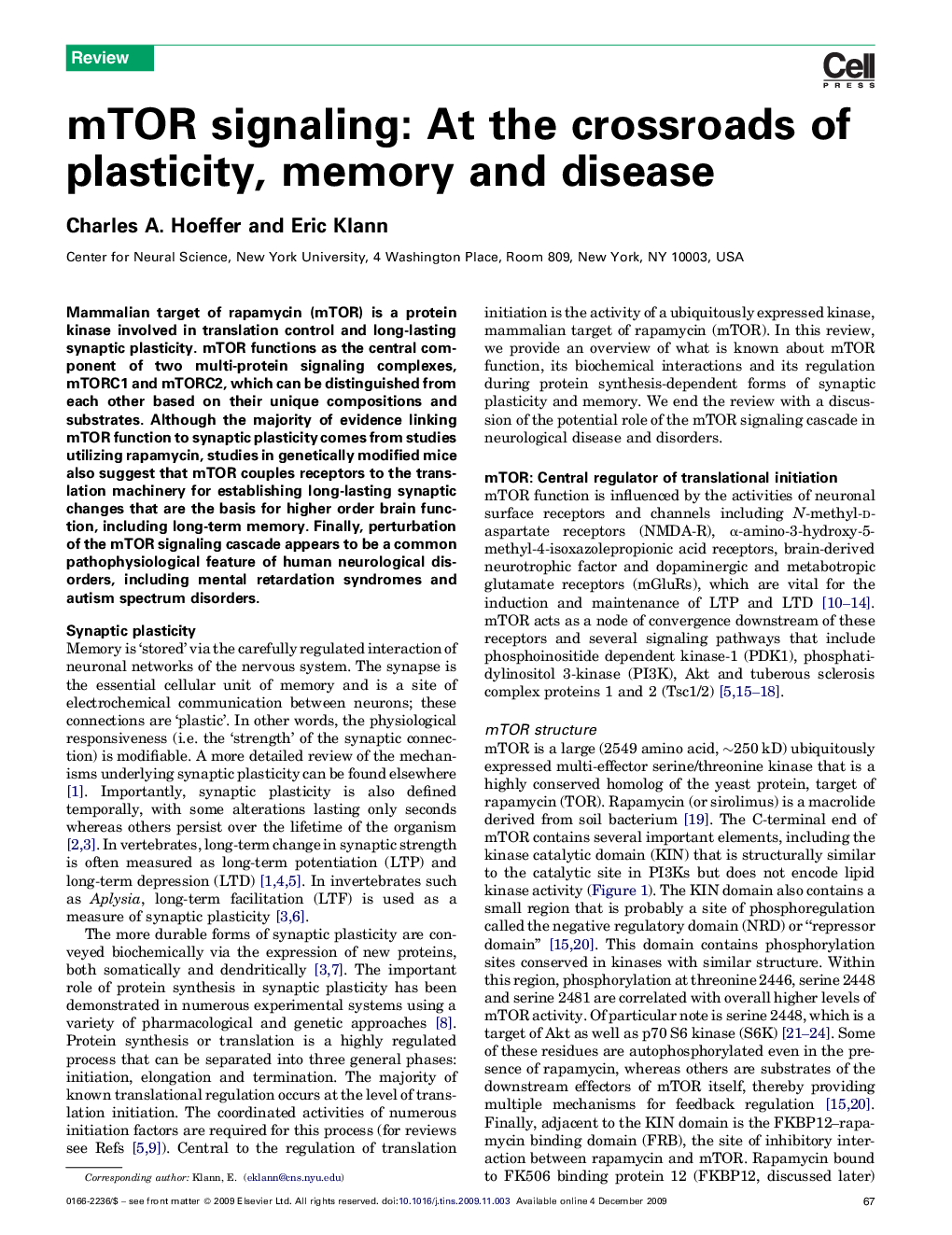| Article ID | Journal | Published Year | Pages | File Type |
|---|---|---|---|---|
| 4354567 | Trends in Neurosciences | 2010 | 9 Pages |
Mammalian target of rapamycin (mTOR) is a protein kinase involved in translation control and long-lasting synaptic plasticity. mTOR functions as the central component of two multi-protein signaling complexes, mTORC1 and mTORC2, which can be distinguished from each other based on their unique compositions and substrates. Although the majority of evidence linking mTOR function to synaptic plasticity comes from studies utilizing rapamycin, studies in genetically modified mice also suggest that mTOR couples receptors to the translation machinery for establishing long-lasting synaptic changes that are the basis for higher order brain function, including long-term memory. Finally, perturbation of the mTOR signaling cascade appears to be a common pathophysiological feature of human neurological disorders, including mental retardation syndromes and autism spectrum disorders.
